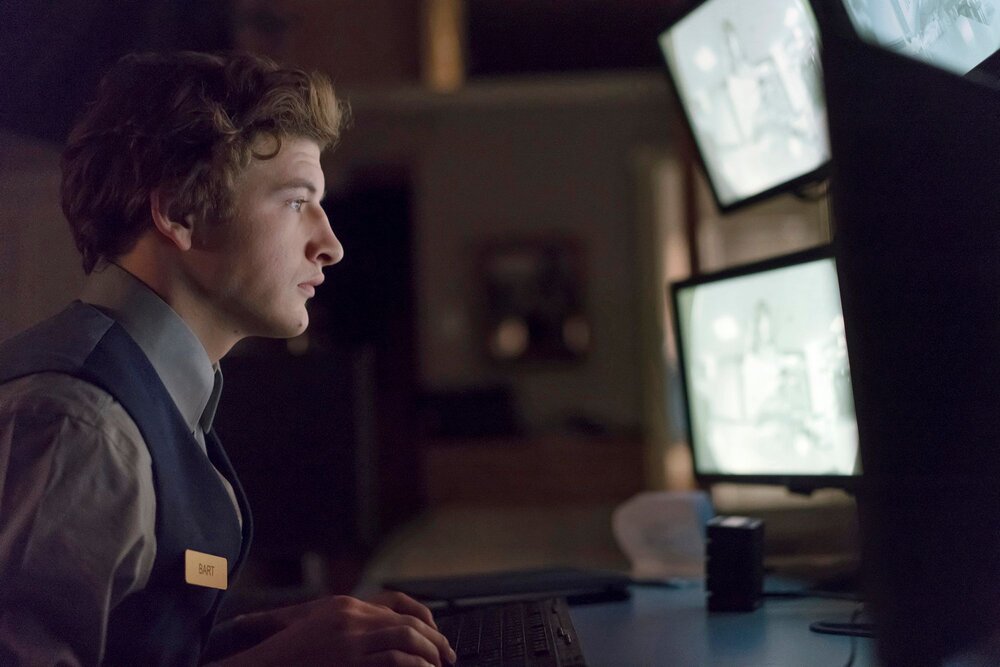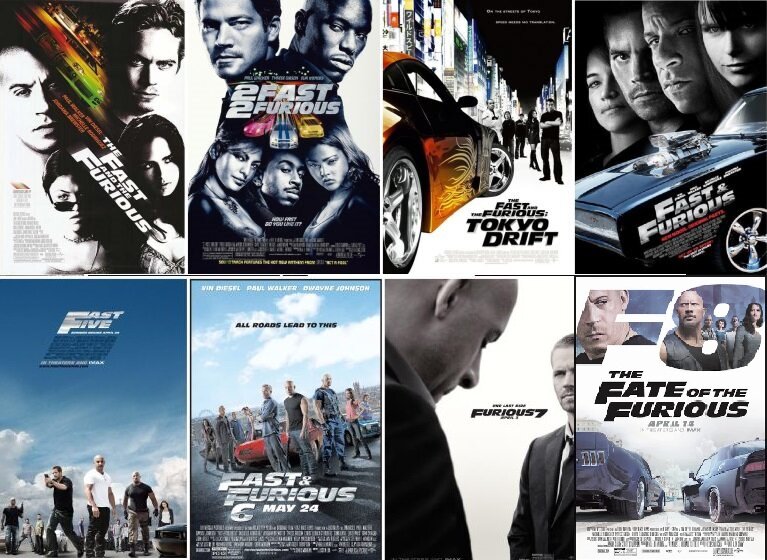
(Image: goldderby.com)
In what has become an annual Monday morning Oscar hangover, this website looks down the calendar and into the crystal ball to prognosticate which 2020 films could be contenders for the 93rd Academy Awards in 2021. Who could possible top the history that was Parasite? Many will try and they may very well come from this scouting report. Last year, 11 films from the 20-film list (and six others from the honorable mention section) ended up with Oscar nominations this past month, including wins for Once Upon a Time… In Hollywood, Judy, Ford v Ferrari, 1917, Rocketman, and Little Women. No sooner than the sun rises and coffee pots turn on, the next Oscar season starts now! Here’s your eighth year of advance scouting courtesy of Every Movie Has a Lesson. Release dates are listed if known.
1. West Side Story
Everything Steven Spielberg touches gets automatic attention. He’s become very selective in his projects, so many were surprised he chose a musical, let alone a remake of a legendary classic. Baby Driver’s Ansel Elgort and newcomer Rachel Zegler are your new Tony and Maria in front of all the usual Spielberg powerhouse collaborators (cinematographer Janusz Kaminski, editor Michael Kahn, screenwriter/playwright Tony Kushner). Its Christmas release will prime it for peak Oscar attention. (December 18)
2. In the Heights
You heard this movie and its creator Lin-Manuel Miranda name-dropped last night. Its emerging star Anthony Ramos was given the mic time. They weren’t kidding about hearing it in the same place next year. Between this and West Side Story, you may have a toe-tapping 93rd Academy Awards. Be ready for the performances and inescapable summer soundtrack from Miranda. (June 26)
3. Tenet
Christopher Nolan is also on the “everything he touches” list for Oscar attention. The John David Washington and Robert Pattinson thriller may be an ominous summer blockbuster instead of small-scale prestige, but that has not stopped Nolan films before. Expect technical attention given to cinematographer Hoyte van Hotema, production designer Nathan Crowley, and composer Ludwig Goransson. (July 17)
4. Dune
Someone emerging to become equal in clout in the technical prowess department to Nolan is Denis Villeneuve. His massive undertaking of Dune may be the film that surpasses Nolan for that elusive Oscar prize. Hopping headfirst into the fantasy realms of Frank Hebert’s source is a cast of zillions including Rebecca Ferguson, Timothee Chalamat, Jason Momoa, Zendaya, Charlotte Rampling, Josh Brolin, Stellan Skarsgard, Oscar Isaac, and Dave Bautista. Someone get a bucket for the eyes popping out for this one come December. (December 18)
5. Mank

(Image: movieweb.com)
It’s been too long since we’ve had a David Fincher feature in theaters. Gone Girl, The Social Network, and The Curious Case of Benjamin Button amassed 22 Oscar nominations and 6 wins. This behind-the-scenes look at the creation of Citizen Kane through the eyes of Oscar winner Gary Oldman’s screenwriter Herman J. Mankiewicz could be the Hollywood-celebrating-Hollywood epic that finally wins Fincher an overdue Oscar. This may be #5 for list purposes, but this is my prohibitive most-anticipated awards season favorite for this coming year. (TBA)
6. The Trial of the Chicago 7

(Image: dailymail.co.uk)
Speaking of David Fincher, one of his former collaborators is screenwriter-turned-filmmaker Aaron Sorkin. He’s following Molly’s Game flying solo with this legal drama about the charges leveled on a group of protestors from the 1968 Democratic Convention riots in Chicago. Enjoy on-point rapid-fire dialogue and the big screen return of Joseph Gordon-Levitt next to Kelvin Harrison, Jr., Michael Keaton, Eddie Redmayne, Jeremy Strong, J.C. MacKenzie, Sasha Baron Cohen, and Frank Langella. (October 2)
7. The French Dispatch
Speaking of another filmmaker looking for that next big picture that wins the highest honors, Wes Anderson has steadily and strongly become one of the best filmmakers of this generation. He too makes the “everything” list and The French Dispatch brings the prerequisite monster cast of Saoirse Ronan, Timothee Chalamat, Elisabeth Moss, Lea Seydoux, Willem Dafoe, Christoph Waltz, Benecio del Toro, Owen Wilson, Adrien Brody, and, of course, Bill Murray. Called a “love letter to journalists,” this could speak to auteurs and regular folks alike. Besides, like the embedded videos, there’s his usual mise en scene to marvel at in the meantime. (July 24)
8. Respect
Between Bohemian Rhapsody and Rocketman, it wouldn’t be the 21st century Oscars without a musical biopic. The brightest and best contender of that genre for 2020 is the story of Aretha Franklin with Jennifer Hudson’s presence and pipes in the lead alongside Oscar winner Forest Whitaker and a renewed Marlon Wayans for director Liesl Tommy. (October 9)
9. The Last Duel
Ridley Scott hasn’t had Oscar attention since The Martian, yet he is a veteran of pedigree where his movies garner serious consideration for praise. Scott re-teams with Matt Damon who reunites with Ben Affleck and joins the fresh pairing of the red-hot Adam Driver for a showdown of knights, noblemen, and squires. Period detail and Ridley Scott are a match made in Oscar heaven. (TBA)
10. Stillwater

(Image: ktul.com)
Spotlight director Tom McCarthy returns to the poignant legal realm after a cute Disney spin with Timmy Failure: Mistakes Were Made. Matt Damon stars as a father looking to clear murder charges subjected to his estranged daughter (Abigail Breslin). Wrought family drama and powerful themes come out strong with McCarthy. Let’s see if this can also be an acting breakthrough for Damon to seek the top trophy that has eluded him. (November 6)
11. Charm City Kings
Moonlight and If Beale Street Could Talk director Barry Jenkins is the story credit on this spring drama about the gangs of the Baltimore streets. While it might not be mainline Jenkins, one has to think the potential for quality is there. Meek Mill, Teyonah Parris, and Jahi D’Allo Winston star. (April 10)
12. Those Who Wish Me Dead

(Image: metro.co.uk)
Ever since Hell or High Water, the respect for Taylor Sheridan as a writer and filmmaker has grown. His latest neo-western is a Montana-set survival thriller set against a wildfire starring Angelina Jolie, Nicholas Hoult, Tyler Perry, and Jon Bernthal. If it can find and bring an edge, the acting and screenwriting categories could be in play. (TBA)
13. The Personal History of David Copperfield
Armando Iannucci’s The Death of Stalin might not have risen to Oscar love, but his follow-up raises the class up a notch by taking on Charles Dickens with Dev Patel leading Hugh Laurie and Tilda Swinton. Advance buzz overseas is very positive as this comedy stands to drop as summer counterprogramming. (May 8)
14. News of the World

(Image: abqjournal.com)
Let’s start the Tom Hanks train. Revitalized with his first Oscar nomination in over a decade for A Beautiful Day in the Neighborhood, the Hollywood icon stars in three 2020 films. The first is the best Oscar hopeful of the trio. He re-teams with his Captain Phillips director Paul Greengrass for a western adapted by Lion filmmaker Luke Davies about a travelling reporter helping out his customers with a kidnapping matter. Expect raw tension as only Greengrass can deliver. (December 25)
15. Greyhound

(Image: youtube.com)
The second Hanks movie of the three comes from a World War II screenplay written by his own hand and directed by up-and-coming Aaron Schneider of Get Low. The story surrounds a Navy captain trying to safely traverse a pack of approaching German U-boats. Get your Captain Phillips and Saving Private Ryan tingles to have Hanks back on a boat and in WWII for a summer adventure. (May 8)
16. BIOS
The third offering from Tom dives into science fiction mixed with a little love for dogs. In a post-apocalyptic landscape, a robot is tasked with protecting a dying man’s dog, one of the few living survivors of the world. Game of Thrones TV director Miguel Sapochnik leads his second feature film and first in a decade. Let’s see if Hanks brings the golden touch. (October 2)
17. I’m Thinking of Ending Things
Every now and then, the Oscars notice quirky head-turners. No one fits that description better than Eternal Sunshine of the Spotless Mind writing Academy Award winner Charlie Kaufman. His first directorial effort since Anamolisa and first with live-action actors in 12 years since Synecdoche, New York is a dramatic thriller about a woman at a relationship crossroads after an odd traveling detour. Wild Rose breakout Jessie Buckley works with Toni Collette and Jesse Plemons for this future indie gem from Netflix. (TBA)
18. Deep Water

(Image: journalposts.com)
It has been a long 18 years since noted master of eroticism Adrian Lyne brought Unfaithful to the masses with a Oscar-nominated Diane Lane. Let’s how Lyne has become an aging fine wine to the tune of Terrence Malick and other filmmakers who have taken decade-plus breaks. His newest film adapts mystery maven Patricia Highsmith with ingenue-of-the-moment Ana de Armas entangled in a murder and disappearance crime when one of her allowed affairs turns up missing and her open-relationship husband, played by Ben Affleck, becomes the prime suspect. (November 13)
19. Mulan
The annual parade of Disney re-imaginings always find their way to Oscar nominations in the artistic categories. With trailers promising more straight epic adventure and way less Eddie Murphy sidekick chicanery, Mulan might just be one of the rare cases where these remakes improve on the originals. The Mouse House is betting strongly on female director Niki Caro (Whale Rider, North Country) to elevate this material into something special. The trailers look phenomenal where future nominations look very viable. (March 7)
20. Soul
Pixar has two 2020 films awaiting release and both are in the first half of the year. Onward feels like silly genre thrills, while Soul looks more like the assured Best Animated Feature contender of the two. Colorfully bringing symbolism and emotion to out of out-of-body experiences, star Jamie Foxx and double Oscar winner Pete Docter (Up and Inside Out) look to squeeze hearts and tear ducts. (June 19)
21. The Woman in the Window
The last entry on this list is a carryover from last year. Director Joe Wright has been more hit (Atonement, Darkest Hour, Anna Karenina, Pride and Prejudice) than miss (The Soloist, Hanna) with Oscar voters. So has his lead, namely 6-time Oscar nominee Amy Adams. This long-delayed 20th Century Fox thriller in the vein of Rear Window finally sees the light of theater screens in the early summer. (May 18)

LOGO DESIGNED BY MEENTS ILLUSTRATED
Permalink
from REVIEW BLOG - Every Movie Has a Lesson https://ift.tt/31J7BbV











































